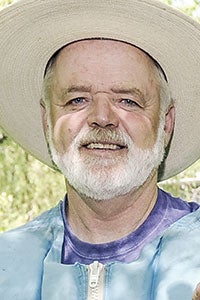Conservation group calls for action on water quality; Exact solutions are still murky
Published 8:29 am Thursday, June 7, 2018

- A canoe heads toward the old railroad bridge over the Cedar River in this file photo. Mower County and the Department of Natural Resources have made the joint decision to close the bridge to pedestrian traffic due to safety concerns. Herald file photo
After an environmental group asked for action on cleaner water in Mower County, the complexity of the issue still stands on the forefront.
A large presence was made by members of the Izaak Walton League, a local conservation group, who called upon Mower County commissioners to take steps in improving water quality in several creeks and rivers on Tuesday afternoon. Specifically citing 500 water samples that were collected and monitored from the Cedar River Watershed District. It was referenced by members speaking at the meeting that the exact number of E.coli bacteria existing in the water was “not safe” for skin contact.
One of the league’s members, Nancy Dolphin, shared that she was speaking to the board in a push to have water quality become a priority of focus for Mower County. She and her husband, Larry Dolphin — former director of the Jay C. Hormel Nature Center — live near Rose Creek, and she said that she was hesitant to allow her grandchildren to play in the streams for fear of exposure to unsafe levels of e.coli bacteria.
“They want to splash and wade, but I’m grandma,” Dolphin shared. “The water is not safe for them. It’s not safe for skin contact. We want them to wade and to swim. We don’t want to have to worry about their health. …it’s not acceptable. We need to do something.”
Much of the league’s stream monitoring took place in 2017 at 83 sites across the CRWD with 40 volunteers who sampled the water from late June to early October. From these results, the league’s members stated that “70 percent” of samples indicated E.coli that exceeded health standards, and DNA tests from seven sites indicated human, swine and cattle contamination, though Austin was not the source of the contamination, according to the league’s findings.

Larry Dolphin
Larry Dolphin also pushed for the county to continue efforts in water monitoring as well as cleaning up the rivers and streams in efforts to stave off e.coli levels by bringing non-compliant residences with septic systems up to compliance, as well as working with agricultural communities to prevent pollution from surface water run-off from the fields as well as animal waste.
“The goal is to obtain fishing and swimmable water,” Larry said. “We (Mower County) could be the model for clean water to the rest of Minnesota. We have to say ‘yes we can’ and we have to believe. Let this be the beginning of clean water…we are open to solutions.”
A complex situation
Although water quality has been a concern for Mower County, it’s hardly a new discussion topic. Officials from the Mower Soil and Water Conservation District (SWCD) and the Cedar River Watershed District (CRWD) acknowledged that elevated E.coli bacteria levels were consistent issues within the county’s waterways, but it’s not an isolated situation. Many other river ways such as the Root River and the Zumbro River also struggle with E.coli levels as do other watershed districts statewide.
SWCD Water Planning and Outreach Coordinator Tim Ruzek, was appreciative of the Ikes in taking initiative for conducting water testing, however, he wanted to emphasize that the rivers—despite elevated E.coli levels—were still safe to use for recreational activities and were not told otherwise by agencies such as the Minnesota Pollution Control Agency (MPCA), and the University of Minnesota, who also assist in monitoring water quality in the county, have not said otherwise.
“Nobody is saying that we shouldn’t have human skin contact in the waterways, there are some precautions to take, however,” Ruzek said over the phone on Wednesday. “We still think the river is something we can work together on addressing impairments for bacteria and sedimentation and excessive nutrients. That’s what a lot of our projects are. We want to know about threats to water quality.”

Tim Ruzek, Mower SWCD’s water plan and outreach coordinator
James Fett, CRWD watershed technician, was also quick to clarify that the Cedar River and Dobbins Creek areas were still safe for people to use and to enjoy recreationally as well as for educational purposes for students through the nature center’s programming. Despite elevated levels, officials share that being aware and cautious also helps when people are out and using the waterways. He also lauded the Ikes for bringing additional attention to the issue of water quality and conducting extensive water monitoring tests.
“I think the water is safe for fishing, swimming and canoeing,” Fett stated. “There is, because of our elevated E.coli levels, a risk if you ingested the water or maybe expose an open wound or sore. Besides that, it’s plenty safe, even still with that risk in the background. We don’t want people to be scared from using our waterways.”
E.coli bacteria is considered a complex bacteria and pollutant to study, Fett noted, because the bacteria can come from multiple sources—septic systems and human waste, agricultural fertilizer spread on farmland that can contaminate surface water run-off, natural E.coli from birds, deer and other native animals—CRWD had been doing extra studies on elevated E.coli in Dobbins to determine highest concentrations of the bacterial colonies, otherwise, the agency has been doing water monitoring as well.
One of the goals that the Ikes had proposed to the county board was to ensure complete compliance checks for residential septic systems, agricultural areas and addressing surface water run-off during a heavy rain event and flooding. However, this issue was more complicated because of funding shortfalls to complete these checks, according to Fett.
“The E.coli issue is more difficult, and the goal in trying to get those septic systems compliant you’d think is fairly achievable, but that goal is difficult,” he said. “Planning and Zoning offices are very busy, and would need another funded position to get into inventory and interacting with non-compliant landowners, and there needs to be a monetary source to pay for that.”
There’s also the issue of the cost of replacing septic systems, which runs between an average of $10,000 to $15,000 for a property owner, Fett added. The Minnesota Department of Agriculture expanded the Agricultural Best Management Practices (Ag BMP) low-interest loans that would help with pollution control for livestock operations, where individuals can apply through the SWCD office or through the county office, take to the bank and get approved for credit and receive the state subsidized loan at 3 percent interest.
However, those types of resources may even be a struggle for individuals who may not get approved for the loan and would need to pay out of pocket.
“It’s kind of a controversial thing,” Fett said. “Who would be happy to find out that they have to spend $10,000-$15,000? I sure wouldn’t be. It’s a law and you have to comply. Maybe a good product to come out of that meeting is to look for grant opportunities to help with that kind of work and going about how to address these issues.”
However, the biggest takeaway that Fett had from the presentation was to be aware that the waterways were still safe for people. Just wash up afterwards.
“The water is perfectly safe unless you ingest or get into open sores,” he said. “People should not be afraid using the wonderful resources we have. It’s good to be aware that we have this issue and good to be cautious when in the water. We know there’s a potential issue, and we need to take precautions to avoid having to deal with that. We definitely don’t want folks thinking the water is not safe.”



